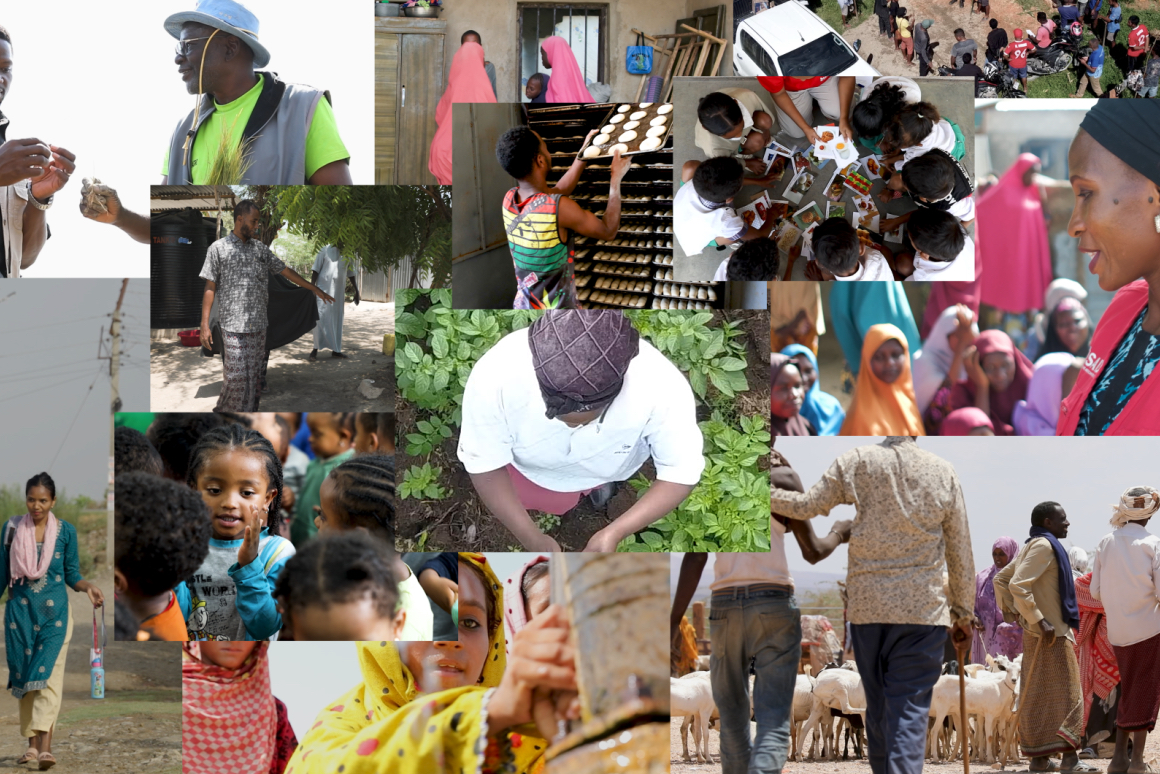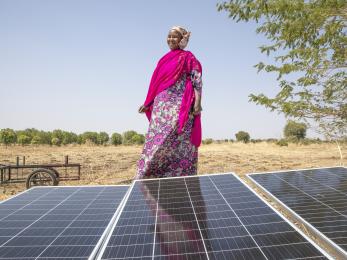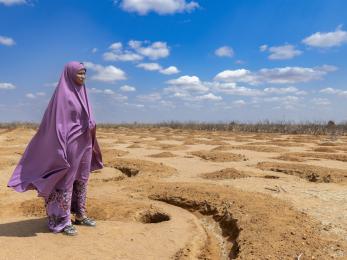“We can do it by ourselves”: Women lead efforts to reduce flood risk
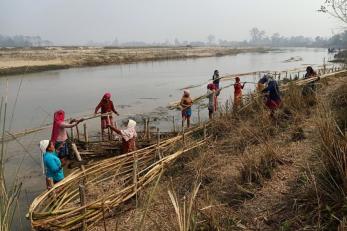
Thousands of miles of rivers weave through Nepal, supporting both the country’s natural flora and fauna and the livelihoods of many communities. In the west, the Karnali is the longest river in the country, with expansive and turbulent segments as well as calm waters. Earlier this year, in the western flatlands of Badabaika, of Krishnapur Municipality in Kanchanpur District, an uncommon sight was found along the Banahara River: a group of women hauling long stalks of bamboo to the riverbank, building a barrier to protect their land.
In recent years, rivers are overflowing at a scale that has not been seen in decades. Just last week, heavy monsoon rains caused floods and landslides, devastating communities with displacement and death in Nepal and neighbouring India. Historic floods like this disproportionately affect rural and remote areas like the far west region of Nepal. In Badabaika, 35 households—more than half of the community—were displaced from their families’ ancestral lands after the massive floods of 2008. The story of communities like Badabaika is prevalent in the far west region where heavy rainfall occurs more regularly due to climate change, causing floods and landslides in areas where families are already facing poverty and lack resources to adequately prepare for natural disasters.
When we first began supporting Badabaika in 2018, many families were still rebuilding their lives from the flood a decade earlier. The floods and subsequent soil erosion took out many of their livelihoods since their main source of support is through agriculture. “I can’t forget that moment,” said Fuldevi Rana, her family was briefly displaced to a nearby forest from flooding. “When we lost everything, every source of income and every glimpse of hope. All of our land was eroded by water.”
After the flood levels had decreased, when we returned to the village and our livelihoods, we couldn't find our land.
Fuldevi Rana, community member
Across the region, we have been working with communities like Badabaika since 2013 through our Managing Risk through Economic Development (MRED) programme, to build resilience to natural disasters and climate change. As part of MRED’s approach, we addressed social norms that often keep women out of decision-making by opening conversations with men and women about the harmful effects of these barriers. We helped the village set up a Community Disaster Management Committee (CDMC), to lead the climate resilience effort in their area, and women were recruited as members. The efforts to build a more disaster resilient community were only strengthened by including women like Fuldevi who wanted to keep her family and neighbours safe.
Before collaborating with us, the community sought help from the local government and organisations but were told there were not enough funds to support a concrete barrier in their small village. In flood-prone areas, we had success with bamboo spurs designed to shore up riverbanks, dissipating the force of floodwater, and preventing soil erosion. So we led community workshops in Badabaika suggesting spurs and were initially met with skepticism.
We understood how they thought a low-cost mitigation structure made of bamboo couldn’t withstand the destruction that had uprooted half of their community. We shared stories of supporting neighbouring communities who were experiencing similar challenges, like in nearby Kailali where they built bamboo spurs to divert the flow of water in a riverbend. The examples emphasised how bioengineering is an effective method for disaster risk reduction. Eventually, they agreed to give it a try, with one community member saying, “Something is better than nothing.”
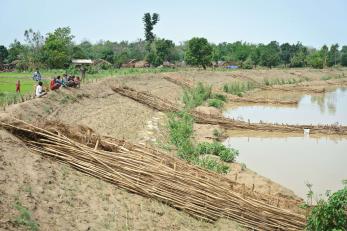
Four years ago, with support and training from our MRED programme, the men and women of Badabaika worked together to construct the bamboo spurs and saved their village from erosion and floods. But their work was not done. Because bamboo is an organic material, the spurs naturally break down and require annual maintenance. When the COVID‑19 pandemic exacerbated economic hardship, the men had to leave the village to earn money, leaving the women in Badabaika to mend and assemble the spurs themselves before this year’s monsoon season. “No matter male or female, we are equally responsible for our community risk management,” said Sukhira Rana, a CDMC member who helped gather women to participate in protecting their community.
We have learned how to do this and we are happy that we can do it by ourselves.
Fuldevi Rana, community member
Not only had the women constructed and repaired the bamboo spurs along the Banahara River, but they also planted another measure to preserve their land and livelihoods. With guidance from MRED, the community grew kans grass along the river’s edge to control and prevent soil erosion. The long, stringy roots of kans grass is especially effective in holding soil together—and it’s a popular crop that sells easily.
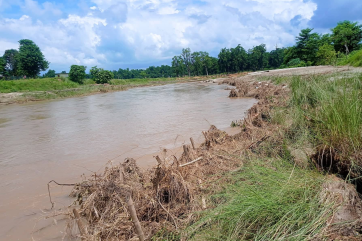

The profits from the sale of kans grass go directly to the community’s emergency management fund—a reserve created by the women in the Badabaika to pay for materials to maintain the spurs in addition to food and supplies during disaster situations. Although the landscape of their home is shifting, Badabaika continues to strengthen their resilience with the women of the community leading the way.

